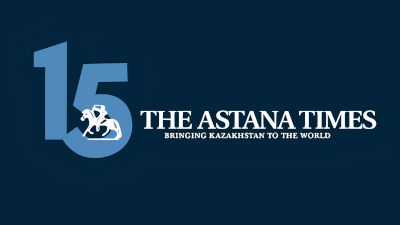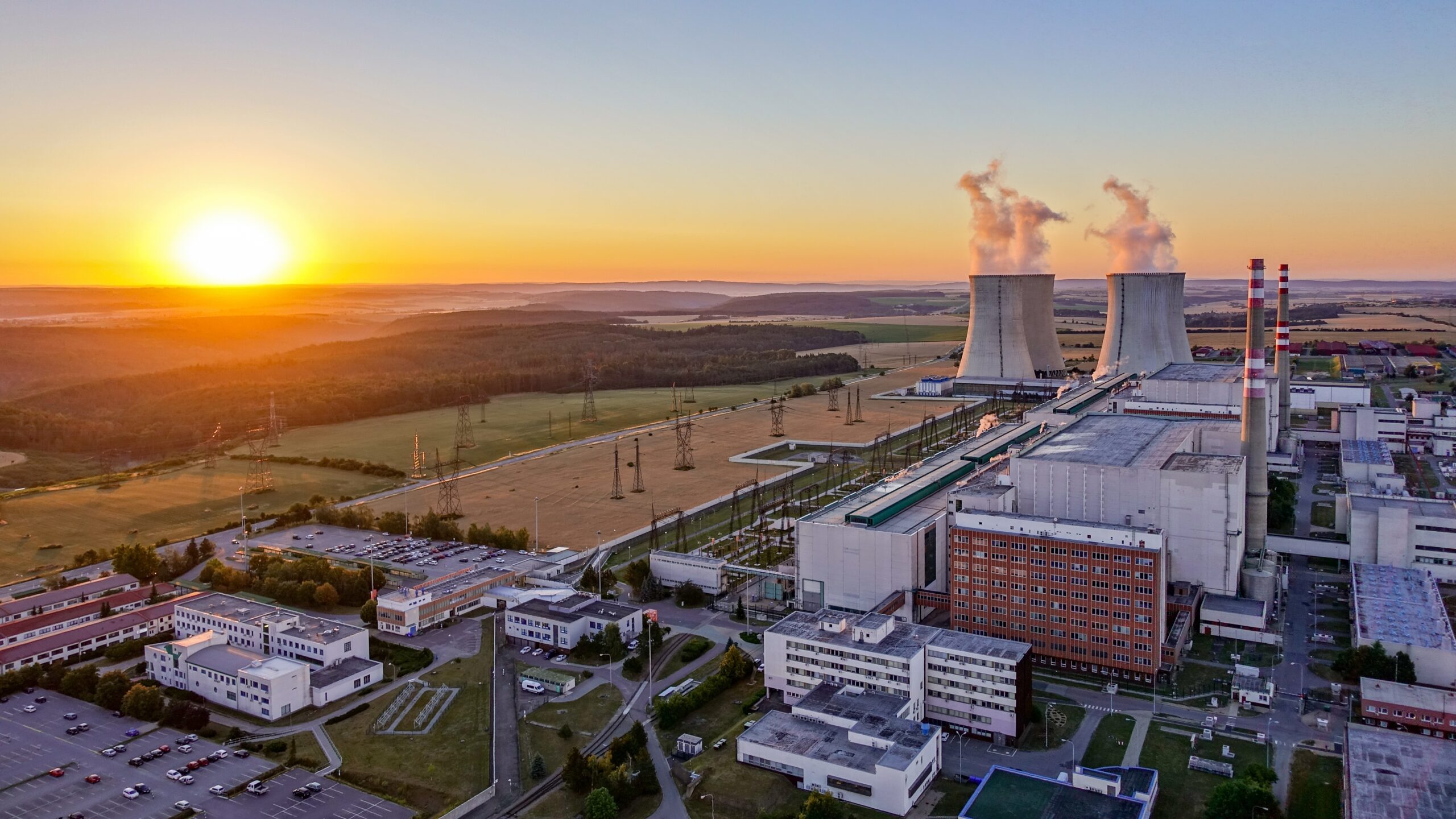From October to December 2024, Kazakhstan’s foreign policy agenda found itself at the epicenter of attention for several global players in the nuclear industry. Following a referendum in which over 70% of the country’s citizens supported the idea of constructing Kazakhstan’s first nuclear power plant (NPP), active diplomatic efforts began to form an international consortium.
President Kassym-Jomart Tokayev announced plans that the participants of the international consortium for the nuclear power plant construction in Kazakhstan will be determined in 2025 in a Jan. 3 interview.
For the first time in a long while, Kazakhstan is emerging in the energy sector not as a seeker of technology but as a desirable partner, boasting extensive resource bases, a favorable investment environment, and enormous potential for the future nuclear energy market in Central Asia.
Multivector nuclear diplomacy (in the best molds of the principles of Kazakhstan’s multi-vector foreign policy) fulfills several very important functions for Kazakhstan. First, it helps the country to obtain the most favorable conditions for the construction of NPPs on its territory.
Second, Kazakhstan, as a middle power, plays a facilitator role, bringing competing parties closer together. The participation of several states in the NPP construction from the political point of view will help the country to reduce the degree of tension in the context of great power competition, as they will all be involved in the construction of the NPP and will be less interested in conflict, otherwise they will not be able to successfully complete the implementation of the project.
November: The month of multivector nuclear diplomacy

Eldaniz Gusseinov.
November can confidently be called the month of Kazakhstan’s “multivector nuclear diplomacy.” President of Kazakhstan Kassym-Jomart Tokayev visited France, the country’s Prime Minister Olzhas Bektenov traveled to China, Foreign Minister Murat Nurtleu went to South Korea, and Kazakhstan made a reciprocal visit to Russian President Vladimir Putin. Each of these visits was focused not only on traditional bilateral cooperation issues but also on discussing possible forms of participation in the construction of an NPP.
All four parties—China, South Korea, Russia, and France—either have a long history of cooperation with Kazakhstan in the nuclear sector or have ambitious plans. These countries strive to secure a share in the future consortium by offering technological solutions, financial models, and long-term guarantee commitments.
The Chinese factor: scale, experience and favorable conditions
China National Nuclear Corporation (CNNC) has long regarded Kazakhstan as a strategic partner. Since 2004, the parties have been developing cooperation in uranium mining and the production of fuel assemblies. Currently, a joint venture, Ulba-TVS, operates in Oskemen, supplying China with reliable fuel for its energy blocks. The plant’s production capacity is about 200 tons of uranium per year, and the guaranteed market demand is projected for the next two decades.
China proposes to build an NPP for Kazakhstan consisting of two units of 1.2 GW each, with a total cost of $5.6 billion and a construction period of about five years. This is significantly cheaper and faster than Kazakhstan initially estimated at $10-15 billion and 10 years. Additionally, CNNC guarantees technology transfer, training of Kazakhstani specialists, and a willingness to share operational experience.
The Chinese argument is largely based on scale and speed: China already has 57 operational NPPs, with another 47 under construction. By 2030, the total capacity of China’s nuclear fleet will exceed 110 GW. Cooperation with China can provide Kazakhstan with access to advanced technologies, streamlined financing conditions, and extensive international cooperation.
South Korean proposal: high technological sophistication and successful international experience
South Korea, represented by Korea Hydro and Nuclear Power (KHNP), is actively promoting its APR-1400 reactors. These reactors have already been certified by the U.S. Nuclear Regulatory Commission (NRC), marking a significant testament to technological reliability and international recognition. The Republic of Korea ranks third in the world in terms of NPP capacity, and the successful construction of the Barakah plant in the UAE adds reputational points for KHNP as a reliable international partner.
In 2022, a memorandum of understanding was signed between Kazakhstan Atomic Electric Stations and KHNP, and in October 2024, a new agreement on the localization of equipment production, personnel training, and the opening of a representative office in Astana was signed with Doosan Enerbility. South Korea emphasizes its readiness not only to build an NPP but also to ensure maximum localization, allowing Kazakhstan to develop its own industrial and technological potential in the future.
Special attention should be paid to the broader context of relations between Kazakhstan and South Korea. At the 17th Central Asia – Republic of Korea Forum in Seoul in November, the parties discussed a wide range of cooperation areas: from transport and logistics interaction to digital transformation. Participation in the construction of an NPP could become the logical culmination and symbol of the strategic partnership between the two countries in the 21st century.
Russian proposal: historical ties and comprehensive approach
Russia, traditionally closely linked with Kazakhstan in the nuclear sector, offers the VVER-1200 reactor. Rosatom has extensive international experience, implementing projects in Türkiye, Egypt, Hungary and other countries. Kazakhstan and Russia have long cooperated in uranium mining, scientific and technical research, and fuel production. Five joint uranium mining enterprises are already connected with Russian companies, creating a solid foundation for future nuclear cooperation.
The Russian side emphasizes sustainability and a clear business model. Rosatom offers flexible financing schemes, extensive technology transfer, and support in personnel training. In a context where many countries are choosing Russian technologies (Hungary, Türkiye, Egypt), Kazakhstan can leverage this experience to its advantage. Moreover, geographical proximity and already established infrastructure for uranium mining and transportation work in favor of the Russian proposal.
France: high-level technologies and long-term uranium partnership
France, represented by EDF and several other companies (Framatome, Orano), holds a strong position in the global nuclear energy sector. The country ranks among the leaders in the world in terms of the number and quality of its NPPs, with 69% of its electricity generated from nuclear plants. Cooperation with Kazakhstan in the nuclear field has a long history: Kazakhstan supplies over a quarter of the uranium consumed in Europe, and Orano owns 51% of the joint venture KATKO for uranium mining.
In November, President Tokayev’s visit to France resulted in the signing of 36 documents, including 14 commercial agreements worth $2.2 billion. France offers the EPR1200 reactor, which can compete with Chinese, Korean, and Russian counterparts. Negotiations with EDF, Framatome, and Arabelle Solutions, as well as visits to the Institute of Radiation Protection and the NPP equipment manufacturing plant in December, demonstrate the seriousness of France’s bid.
France emphasizes the importance of reliable and diversified partnerships, is ready to support personnel training, and develop infrastructure projects. Relations between Paris and Astana are strengthening through strategic partnership agreements in critical resources, renewable energy sources, and green technologies, allowing French participation in the consortium to be viewed as part of a broader energy roadmap.
USA: Small Modular Reactors and an Open Tender
Although the American proposal currently sounds more abstract, the USA is ready to promote small modular reactor (SMR) technologies from NuScale and GE Hitachi. This innovative direction may interest Kazakhstan as an opportunity for diversification and reducing the capital intensity of projects. The American side emphasizes its support for conducting an open international tender in which all interested players can participate.
The USA has also long cooperated with Kazakhstan in the field of nuclear non-proliferation, dismantling nuclear infrastructure, and implementing civilian nuclear cooperation projects. The existence of a well-established legal and contractual framework increases the chances of more active U.S. participation in the future consortium.
International consortium: a new vector and benefits for Kazakhstan
The main question currently facing Kazakhstan is the architecture of the future consortium. None of the parties hold an absolute advantage, although it is noticeable that some actors are much more active than others. China offers speed and affordability, South Korea provides internationally recognized technology and experience in implementing large overseas projects, Russia offers years of comprehensive cooperation and a vast market, France brings high safety standards and a solid resource base, and the USA offers the prospect of innovative small modular solutions.
The decision will be made in 2025, and by that time Kazakhstan will need to establish selection criteria. Among them may be:
● Technological Reliability and Safety. Nuclear safety issues are paramount. Technologies must be certified by authoritative international bodies, possess passive safety systems, and modern digital management systems.
● Timelines and Costs. Kazakhstan aims to minimize construction costs and timelines. China has already presented a competitive price and schedule, but other participants may offer flexible models as well.
● Localization and Personnel Training. Kazakhstan’s key interest is the development of its own nuclear industry. South Korea has already focused on localizing equipment production and training local specialists. Similar proposals are coming from other parties.
● Investments, Financing, and Flexibility of Conditions. Financial terms, equity participation, the possibility of attracting international credit lines, and guarantee commitments will all play a crucial role. Russia and France, for example, already have successful experiences with comprehensive projects involving various financial instruments.
● Political Balance and Geostrategic Multivectority. Kazakhstan actively emphasizes its multivector foreign policy. Creating a consortium that includes several countries will allow balancing influence and reducing dependence on a single supplier. This aligns with the country’s overall geostrategic strategy, striving to maintain friendly relations with multiple global power centers simultaneously.
Broader energy context: not only nuclear, but also gas, oil, and renewable energy sources
Kazakhstan’s multivector nuclear diplomacy is not implemented in isolation from other energy projects. Concurrently, discussions are underway regarding the construction of thermal power plants (TPPs), gas pipelines, the development of offshore oil and gas fields, the launch of polyethylene and butadiene production, as well as the development of renewable energy sources. China is interested in lithium-ion batteries and trans-Caspian routes, South Korea in the localization of energy equipment production and modernization of energy infrastructure, France in the development of transport corridors and the Middle Corridor of Eurasia.
Given that Kazakhstan possesses abundant resources, a strategic position between East and West, and strives for the technological upgrade of its energy sector, a multilateral consortium format for an NPP could become a model for other industries. A format where multiple global players converge on a single project can enhance the resilience of the country’s energy system to geopolitical fluctuations.
Path to 2035: from decisions to implementation
The final decision on the choice of technology and partners for building an NPP is expected in 2025. Construction is scheduled to begin in 2029, with commissioning set for 2035. These timelines lay the groundwork for Kazakhstan’s future nuclear sector, which will play a key role in ensuring energy security, diversifying energy sources, and reducing the carbon footprint.
Cooperation in nuclear energy is not only about investments and technologies but also about socio-economic development, training highly qualified personnel, creating new jobs, and the influx of advanced knowledge and competencies. This is why the choice of a partner or partners is so crucial—those who are ready not just to supply equipment but also to share responsibility with Kazakhstan for the future of its energy sector.
A new stage in nuclear diplomacy
Kazakhstan’s multivector nuclear foreign policy comes to the forefront at the end of 2024. Leading global players have entered the race for a place in the future consortium: China, South Korea, Russia, France, and potentially the USA. Each offers a unique package of conditions, ranging from technological know-how to comprehensive investments and infrastructure support.
For Kazakhstan, this is a unique opportunity to strengthen its sovereignty, enhance its role in the global energy architecture, and realize its potential as a leader in the nuclear field. The new NPP can become a symbol of how skilled diplomacy and multivector policy allow the country to maximize benefits from the global competition among technological giants.
In the coming months and years, it will be fascinating to see how Kazakhstan selects the optimal option among these proposals that aligns with its long-term interests and how it manages to utilize this multilateral partnership to strengthen its position in the global energy system.
The author is Eldaniz Gusseinov, a non-resident research fellow at Haydar Aliyev Center for Eurasian Studies of the Ibn Haldun University, Istanbul.
Disclaimer: The views and opinions expressed in this article are those of the author and do not necessarily reflect the position of The Astana Times.



